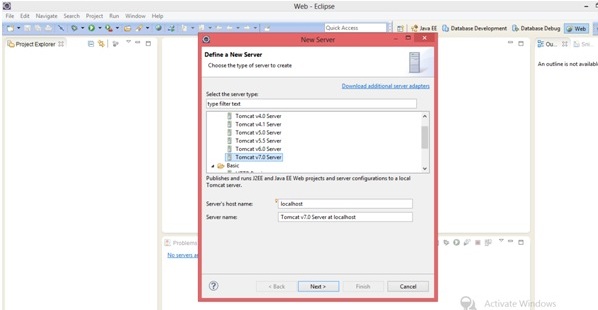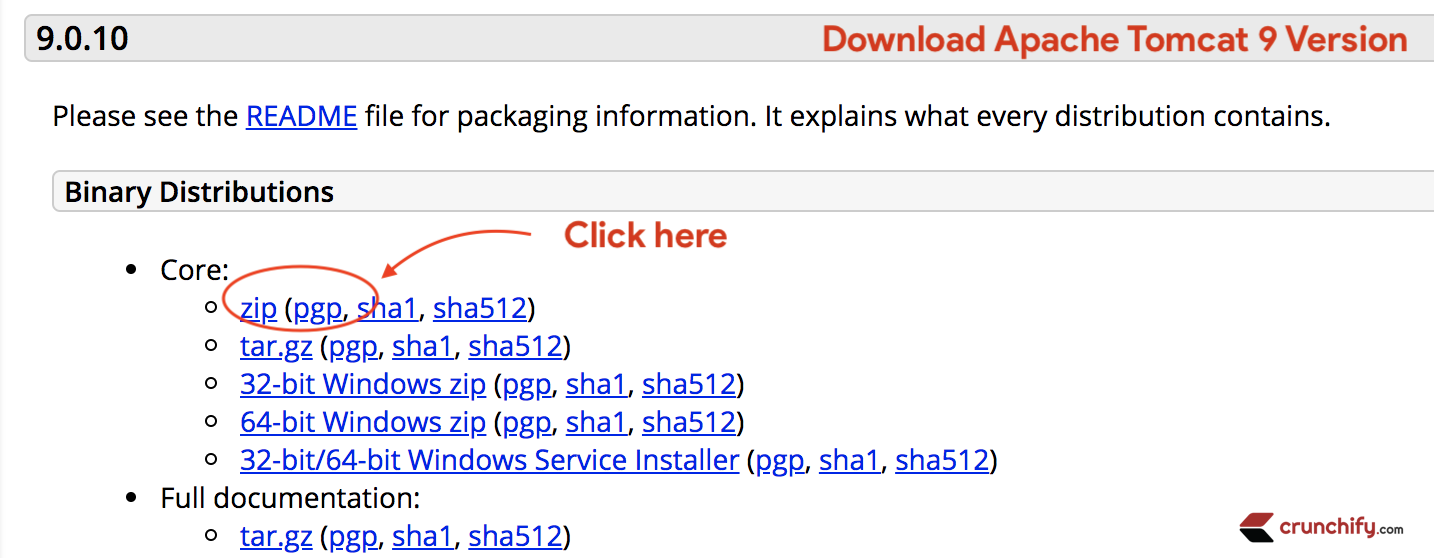

- #Apache tomcat download 7 for eclipse how to
- #Apache tomcat download 7 for eclipse portable
- #Apache tomcat download 7 for eclipse software
- #Apache tomcat download 7 for eclipse windows
WebSocket support - Developing WebSocket applications for Tomcat. High Concurrency JDBC Pool - Configuring the app to use an alternative JDBC pool. #Apache tomcat download 7 for eclipse windows
Windows Authentication - Configuring the app to use integrated Windows authentication. Windows Service - Running the program as a service on Microsoft Windows. Security Considerations - Options to consider when securing an installation. Using the libraries with Maven - Obtaining Tomcat jars through Maven. Additional Components - Obtaining additional, optional components. Advanced IO - Extensions available over regular, blocking IO. Virtual Hosting - Configuring virtual hosting in Tomcat. #Apache tomcat download 7 for eclipse portable
Apache Portable Runtime - Using APR to provide superior performance, scalability, and better integration with native server technologies. Logging - Configuring logging in the software. Monitoring and Management - Enabling JMX Remote support, and using tools to monitor and manage Apache Tomcat. Connectors - Connectors available in the app, and native web server integration. Balancer - Configuring, using, and extending the load balancer application. The Clustering - Enable session replication in the environment. Default Servlet - Configuring the default servlet and customizing directory listings. MBeans Descriptors - Configuring MBean descriptors files for custom components. Proxy Support - Configuring the app to run behind a proxy server (or a web server functioning as a proxy server). SSI - Using Server Side Includes in the app. SSL/TLS - Installing and configuring SSL/TLS support so that your Tomcat will serve requests using the https protocol. JSPs - Information about Jasper configuration, as well as the JSP compiler usage. Classloading - Information about class loading in the software, including where to place your application classes so that they are visible. JDBC DataSource - Configuring a JNDI DataSource with a DB connection pool. JNDI Resources - Configuring standard and custom resources in the JNDI naming context that is provided to each web application. Security Manager - Configuring and using a Java Security Manager to support fine-grained control over the behavior of your web applications. #Apache tomcat download 7 for eclipse how to
Realms and Access Control - Description of how to configure Realms (databases of users, passwords, and their associated roles) for use in web applications that utilize Container Managed Security.Host Manager - Operating the Host Manager web app to add and remove virtual hosts while the app is running.

 Manager - Operating the Manager web app to deploy, undeploy, and redeploy applications while the app is running. Deployer - Operating the Tomcat Deployer to deploy, precompile, and validate web applications. It is intended to be a collaboration of the best-of-breed developers from around the world.
Manager - Operating the Manager web app to deploy, undeploy, and redeploy applications while the app is running. Deployer - Operating the Tomcat Deployer to deploy, precompile, and validate web applications. It is intended to be a collaboration of the best-of-breed developers from around the world. 
#Apache tomcat download 7 for eclipse software
Apache Tomcat software powers numerous large-scale, mission-critical web applications across a diverse range of industries and organizations. In "Variable Value", enter your JRE installed directory (e.g., "C:\Program Files\Java\jre7\").The Apache Tomcat software is an open-source implementation of the Java Servlet, JavaServer Pages, Java Expression Language, and Java WebSocket technologies. Then switch to the "Advanced" tab and select "Environment Variables" / "System Variables" then select "New" (or "Edit" for modification). Push the "Start" buttonthen select "Control Panel" / "System" / "Advanced system settings". So for creating JRE_HOME we need to use the same procedure. Sometimes we need to set JRE_HOME also.In "Variable Value", enter your JDK installed directory (e.g., "c:\Program Files\Java\jdk1.7.0_ <= Check that this is OUR JDK installed directory To create the JAVA_HOME environment variable in Windows XP/Vista/7 we need to push the "Start" button then select "Control Panel" / "System" / "Advanced system settings".We need to create an environment variable called "JAVA_HOME" and set it to our JDK installed directory.








 0 kommentar(er)
0 kommentar(er)
